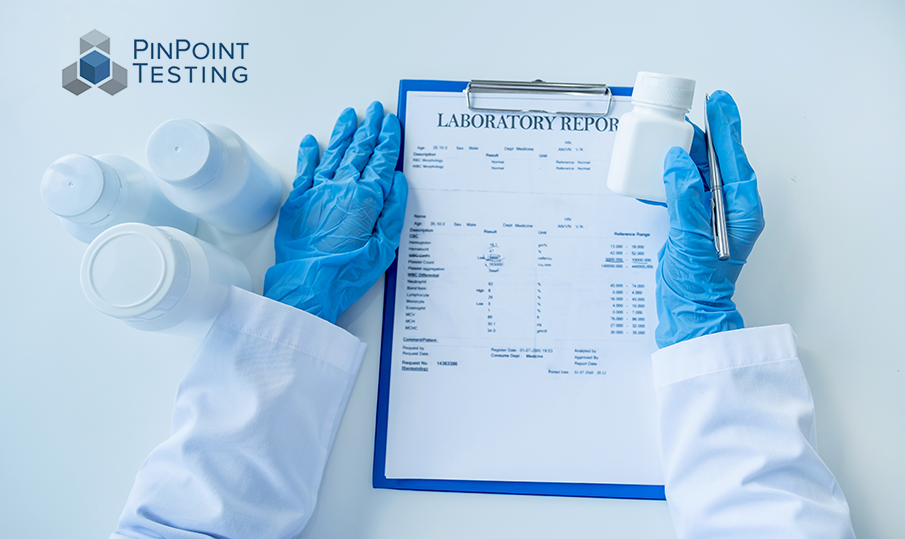The following article was sourced from healthlinkbc.ca
Test Overview
A toxicology test (“tox screen”) checks for drugs or other chemicals in your blood, urine, or saliva. Drugs can be swallowed, inhaled, injected, or absorbed through the skin or a mucous membrane. In rare cases, a tox screen may check your stomach contents or sweat.
A tox screen may check for one certain drug or for up to 30 different drugs at once. These may include prescription medicines, non-prescription medicines (such as aspirin), natural health products, alcohol, and illegal drugs, such as cocaine and heroin.
Testing is often done on urine or saliva instead of blood. Many drugs will show up in a urine or saliva sample. And urine and saliva tests are usually easier to do than blood tests.
Why It Is Done
Why are toxicology tests done?
This test may be done to:
- Find out if a drug overdose may be causing life-threatening symptoms, unconsciousness, or strange behaviour. This test will be done right away in this situation. A toxicology test can also be done up to 3-4 days after a possible overdose.
- Check for drug use in the workplace. Testing is common for people who work in public safety, such as bus drivers or child care workers. Some jobs require a toxicology screen as part of the hiring process.
- Check for drug use in people going through a drug treatment program.
- Look for the use of drugs that enhance athletic ability.
- Check for the presence of a date rape drug.
How To Prepare
Many medicines can change the results of this test. So give your doctor a list of all the medicines you have taken in the past 4 days. Be sure to include any prescription and over-the-counter medicines and natural health products.
How It Is Done
Blood test
A health professional uses a needle to take a blood sample, usually from the arm.
Random urine drug screen
You may be asked to collect a clean-catch midstream urine sample for testing.
A random urine sample collection may also be called a urine drug screen. This test is typically done under controlled conditions and you will be required to provide identification. For additional information on how the test is done, how to prepare for it and what to expect from the results, contact the lab that will be administering the collection.
- Wash your hands before you collect the urine.
- You will be asked to urinate into a collection container.
- If the collection cup has a lid, remove the lid and set it down with the inner surface up.
- Collect a minimum of 40mls of urine.
- Carefully replace the lid on the cup. Return the cup to lab assistant.
- Wash your hands.
The temperature of the urine may also be tested to make sure that it is fresh.
Saliva test
The person who collects the sample will either:
- Swab the inside of your cheek, or
- Ask you to spit into a tube.
How It Feels
Blood test
When a blood sample is taken, you may feel nothing at all from the needle. Or you might feel a quick sting or pinch.
Urine test
It is not painful to collect a urine sample. Another person may watch while you collect the sample. This may make you feel uncomfortable.
Saliva test
It is not painful to collect a saliva sample. Another person will collect the sample or watch you collect the sample.
Risks
Blood test
There is very little chance of having a problem from this test. When a blood sample is taken, a small bruise may form at the site.
Urine test
There are no known risks from having this test.
Saliva test
There are no known risks from having this test.
Results
Most tox screens are qualitative tests. This means they only find out if drugs are present in the body, not the exact level or quantity. Follow-up quantitative testing is often done to find the level of a drug in the body and to confirm the results of the first test.
| Normal: | No unexpected drugs are found in the sample. |
|---|---|
| Levels of prescription or non-prescription medicines found in the sample are within the effective (therapeutic) range. | |
| Abnormal: | Unexpected drugs are found in the sample. |
| Levels of prescription or non-prescription medicines found in the sample are:Below the effective (therapeutic) range, orAbove the therapeutic range, orHigh enough that they may be toxic. |
High values
High levels may be caused by a drug overdose, either by mistake or on purpose. A drug overdose may be caused by one large dose of medicine or long-term overuse of a medicine.
Interactions between medicines also can cause problems, especially when you start to take a new medicine. A high level may mean that you are not taking your medicine correctly or that your body is not processing the medicine as it should.
Low values
Low levels of prescription or over-the-counter medicines may tell your doctor you are not in an effective (therapeutic) range.


Recent Comments